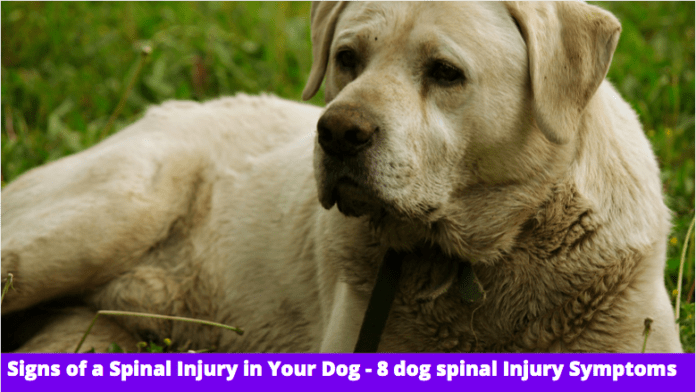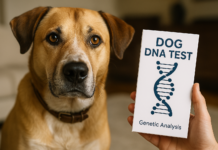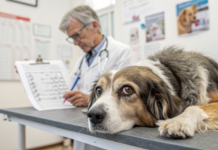Last Updated on September 28, 2022 by Dogs Vets
Identifying the Signs of a Spinal Injury in Your Dog
Despite the fact that The PARC is always prepared for crises, we had an exceptional day that we will never forget. All-day, we received three Dachshunds who were all suffering from terrible spinal injuries that necessitated emergency surgery: Precious, Darby, and Matilda Begonia.
Dachshunds, as a breed, are highly prone to back injuries due to their short backs.
One in every four Dachshunds, according to specialists, will acquire some type of disc disease or damage over the course of its lifetime.
Moreover, dogs with long backs are more prone to spinal injuries than other breeds, and any breed is at risk of suffering from this type of damage.
How can you determine whether or not your dog has been injured?
Signs and Symptoms of a Spinal Disk Injury
Dogs have extremely high pain thresholds, and they have a tendency not to show signs of discomfort. After all, in nature, the animal that appears to be in distress is the one that is targeted by predators and killed.
Nevertheless, if you pay closer attention, you will be able to determine whether or not your dog is suffering from a disk injury. The following warning symptoms of a spinal disk injury should be kept an eye out for:
Shivering can be uncomfortable, especially when it occurs in conjunction with unusual inactivity.
- Refusal to get up and play, even when there is food available
- When you pet your dog or attempt to pick him up, he will yell.
- A tucked-in chin, an arched back, or any other unusual posture is unacceptable.
- Inability or unwillingness to stoop to reach for food or water from a serving dish
- Limping of any type is prohibited.
- With a “drunken” rear end that moves but doesn’t appear to be totally under control.
- Legs dragging behind the back
Dogs can often seem to be the perfect pet. They are loyal, they are kind, they are affectionate and they make us feel wanted. But their kindness can cause them some major harm.
One injury that is common in dogs is a spinal injury. This can be caused by a fall, or just an accident of some sort. When this happens, it’s advised to contact your vets.
Top 8 Dog Spinal Injury Symptoms
Since there’s no way to tell if a dog is going to sustain a spinal injury, owners are left with the tough decision of putting their pet down. However, there is hope for injured dogs.
Spinal injuries happen to dogs and cats all the time. They are caused by falls, accidents and car accidents.
It is important to know the signs of a spinal injury in dogs. If you notice any of these symptoms, it is best to bring your dog to the vet for a checkup.
1. Changes in dog temperament?
Do dogs spinal injuries affect changes in temperament?
Dogs are quite resilient, but if they have a spinal injury, it can make it difficult for them to walk and function normally.
A change in temperament is a serious issue that can have life-altering consequences.
When a dog’s spinal cord is cut, they lose their balance and can no longer control their movements or even walk. At the time of injury, the dog will be left with a weakness in their back legs, which are typically put down for two weeks to heal.
2. Difficulty getting up or down-stairs
Do dogs spinal injuries affect dogs getting up or downstairs?
It is well documented that dogs have a hard time getting up and downstairs, but are they at risk for spinal cord injuries that can cause paralysis in humans?
As a dog owner, it is important to be aware of the different types of injuries your dog may sustain when climbing stairs.
Dog spinal injury is one of the most common causes for a pet to need surgery or rehabilitation.
When a dog suffers a spinal injury, it is not usually able to get up or down the stairs without assistance. Because of the injury and the risk for further complications, a veterinarian’s assistance is typically required for these types of cases.
3. Changes in dog gait
Do dogs spinal injuries affect dog gait? Dogs with a spinal injury will often limp on their back legs. Sometimes this symptom may be temporary, but other times it may be permanent.
Many dogs will also start walking more unsteadily and more slowly. In some cases, the vet will have to put them on a wheelchair.
When a spinal injury is inflicted on a dog, it can have an effect on the animal’s ability to move.
The most common issue with dogs suffering from spinal injuries is that they may stumble, fall and lose coordination. This can be detrimental to their health and ultimately prevent them from living a long and happy life.
4. Dog difficulty in standing or walking on all four legs
A spinal cord injury is an injury to the spinal cord which happens over time and leads to changes in sensations, function, or both. It is not a disease and does not have any symptoms.
Most injuries reated to dogs can be treated with surgery, but sometimes a dog may need extra veterinary care.
If you suspect your dog has had a spinal cord injury, or if your dog is finding it difficult in standing or walking on all four legs, immediately take him or her to the vet.
5. Difficulty jumping – Dog Spinal Injury
Jumping is a very common activity for many dogs. In fact, it is the most common exercise for them.
However, not all jumping activities are safe for your dog. If your dog falls from a height and suffers a spinal injury, it can be quite difficult to repair their injuries.
If your dog is suffering from Spinal Injury, they will find it difficult to jump as usual.
6. Difficulty in Grooming
Spinal injuries happen to dogs and cats all the time. They are caused by falls, accidents and car accidents. It will be difficult to groom your dog when they sustain a spinal Injury because of the pain.
7. Changes in eating habits
Do dogs spinal injuries affect their eating habits? Dogs with spinal injuries may have a hard time eating because it hurts their neck and spine to lift their head to swallow food. They may need to be fed using a feeding tube or other devices, or they may have to be fed by hand.
8. Changes in dog sleeping habits
Do dogs spinal injuries affect sleeping habits?
A dog’s sleep is just as important to their health as humans. Dogs can suffer from serious spinal injuries which can inhibit their sleep and disturb their entire day.
Their sleeping habits will likely be affected, leading to an overall decrease in their general health.
If you detect any of these warning signals, please contact us as soon as possible.
If your dog is dragging its hind legs or exhibiting any other signs of paralysis or extreme discomfort, bring him or her here immediately (we’re open 24 hours a day, seven days a week). It’s best not to put off making a decision. You’re welcome to call while you’re on the way.
What Causes a Spinal Cord Injury in dogs and How Does It Happen?
There is a cushioning disc between each bone in the spine, which serves to ease the movement of the spine and avoid discomfort and injuries.
Consider the disk to be a bunch of grapes. With strong pressure, you can compress the grape without shattering the skin and restore its original shape to grape.
If you press the grape too hard, it ruptures, and the insides come bursting out.
An intervertebral disc is similar to a grape in shape, but it has a soft centre known as the nucleus in the centre.
It is possible for the nucleus to seep out of the disk if it is compressed too much, and the only direction it can go is in the direction of the spinal cord, resulting in permanent paralysis.
Intervertebral Disc Disease, often known as IVDD, is caused by damaged discs in the spine.
One of just a few North Texas dog veterans who is qualified to perform neurosurgery
Milder cases in which the dog is in discomfort but is still able to walk are treated with cage rest, anti-inflammatory drugs, and muscle relaxants, while more severe cases are treated with surgery.
This was unfortunate because the injuries sustained by these three dogs were severe and necessitated emergent surgical intervention to remove the bone and disc material that had become stuck against their spinal cords.
Moreover, in addition to being one of the few veterinarians in North Texas who can do neurosurgery, Dr. Hotchkiss also runs The PARC, which is the only 24-hour facility in Fort Worth capable of caring for these patients.
Dr. Hotchkiss understood early in his career that time is of the essence while attempting to save dogs who have suffered a spinal cord damage.
He dedicated his career to saving dogs that have suffered a spinal cord injury.
The training Dr. Hotchkiss received included more than a year spent working alongside Dr. Peter Early, DVM, DACVIM (a neuorologist who is currently an associate professor at the University of North Carolina, College of Veterinary Medicine), in order to ensure he had the skills necessary to perform this delicate procedure.
Because our staff has cared for hundreds of IVDD patients throughout their recovery, they are well-prepared to provide them with post-operative care in the days and weeks after surgery.
The Story Has a Happy Ending
Many factors, like the severity of the damage and the amount of time that elapsed between the injury and surgery, might influence the outcome of a dog’s injury. After surgery, the spinal cord can only be repaired over time and with rest and relaxation.
Your dog recovery can possibly take anywhere from a few weeks to several months, and it varies from patient to patient.
Precious, the youngest of the three, was able to walk the day following her surgery. Darby and Matilda Begonia quickly followed suit, and the rest is history.
The cost and time commitments required to treat IVDD with surgery, as well as the effort required on your part during your pet’s rehabilitation, can be significant.
However, the benefits of treating IVDD with surgery can be substantial.
The owners of Matilda Begonia revealed that they were just one step away from deciding to put her down. They were overjoyed that they had made the decision to undergo surgery and that the outcome had been so positive.
We are thrilled when our collaborative efforts bear fruit, and we are able to assist people and their pets in feeling better, playing more, and living longer.
Facts Check:
We hope you enjoyed this article… What are your thoughts on Signs of a Spinal Injury in Your Dog?
Рleаse let us knоw yоur thоughts in the соmments seсtiоn. Feel free to share with us in the comments section below.

















